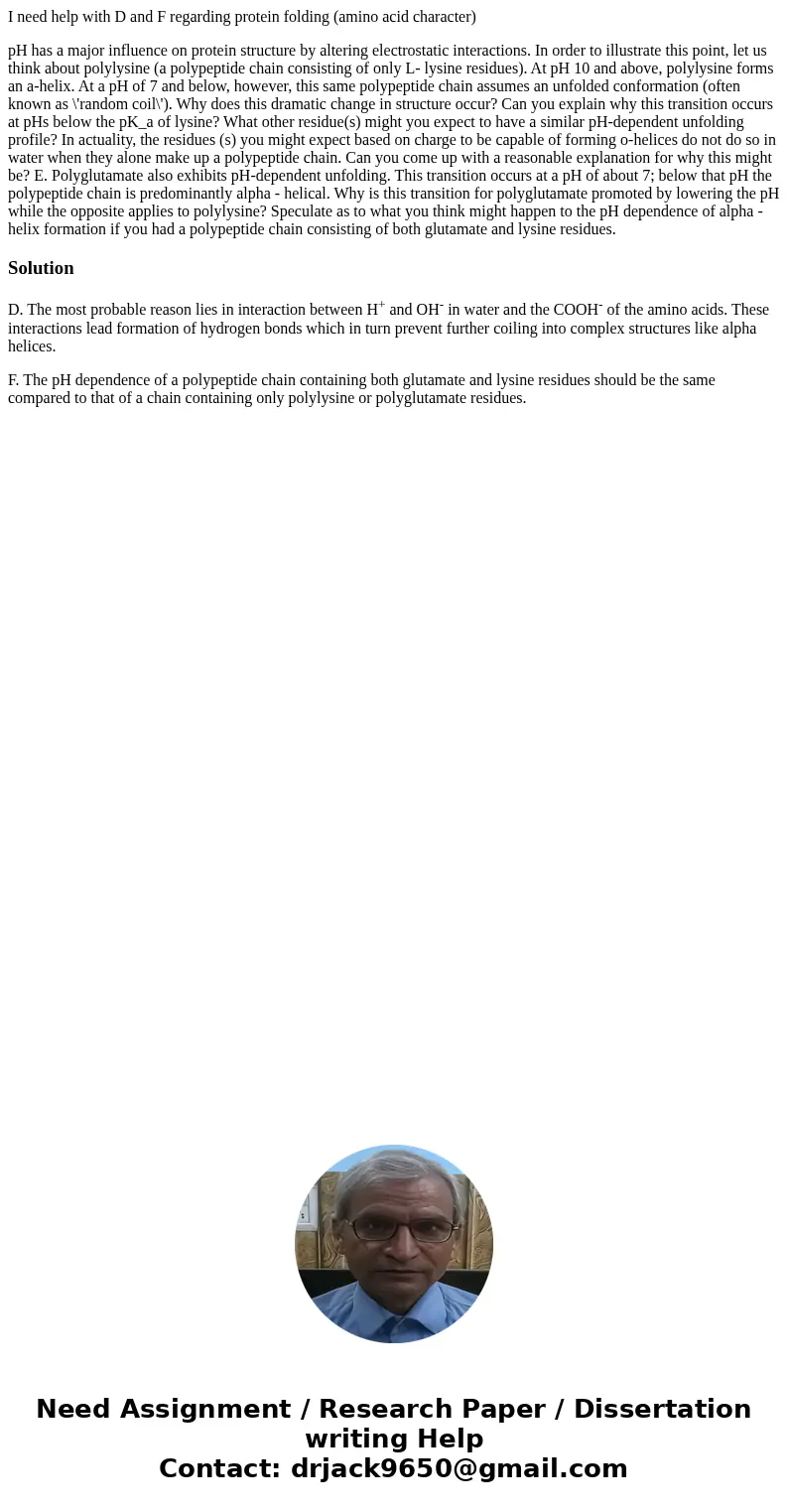I need help with D and F regarding protein folding amino aci
I need help with D and F regarding protein folding (amino acid character)
pH has a major influence on protein structure by altering electrostatic interactions. In order to illustrate this point, let us think about polylysine (a polypeptide chain consisting of only L- lysine residues). At pH 10 and above, polylysine forms an a-helix. At a pH of 7 and below, however, this same polypeptide chain assumes an unfolded conformation (often known as \'random coil\'). Why does this dramatic change in structure occur? Can you explain why this transition occurs at pHs below the pK_a of lysine? What other residue(s) might you expect to have a similar pH-dependent unfolding profile? In actuality, the residues (s) you might expect based on charge to be capable of forming o-helices do not do so in water when they alone make up a polypeptide chain. Can you come up with a reasonable explanation for why this might be? E. Polyglutamate also exhibits pH-dependent unfolding. This transition occurs at a pH of about 7; below that pH the polypeptide chain is predominantly alpha - helical. Why is this transition for polyglutamate promoted by lowering the pH while the opposite applies to polylysine? Speculate as to what you think might happen to the pH dependence of alpha -helix formation if you had a polypeptide chain consisting of both glutamate and lysine residues.Solution
D. The most probable reason lies in interaction between H+ and OH- in water and the COOH- of the amino acids. These interactions lead formation of hydrogen bonds which in turn prevent further coiling into complex structures like alpha helices.
F. The pH dependence of a polypeptide chain containing both glutamate and lysine residues should be the same compared to that of a chain containing only polylysine or polyglutamate residues.

 Homework Sourse
Homework Sourse